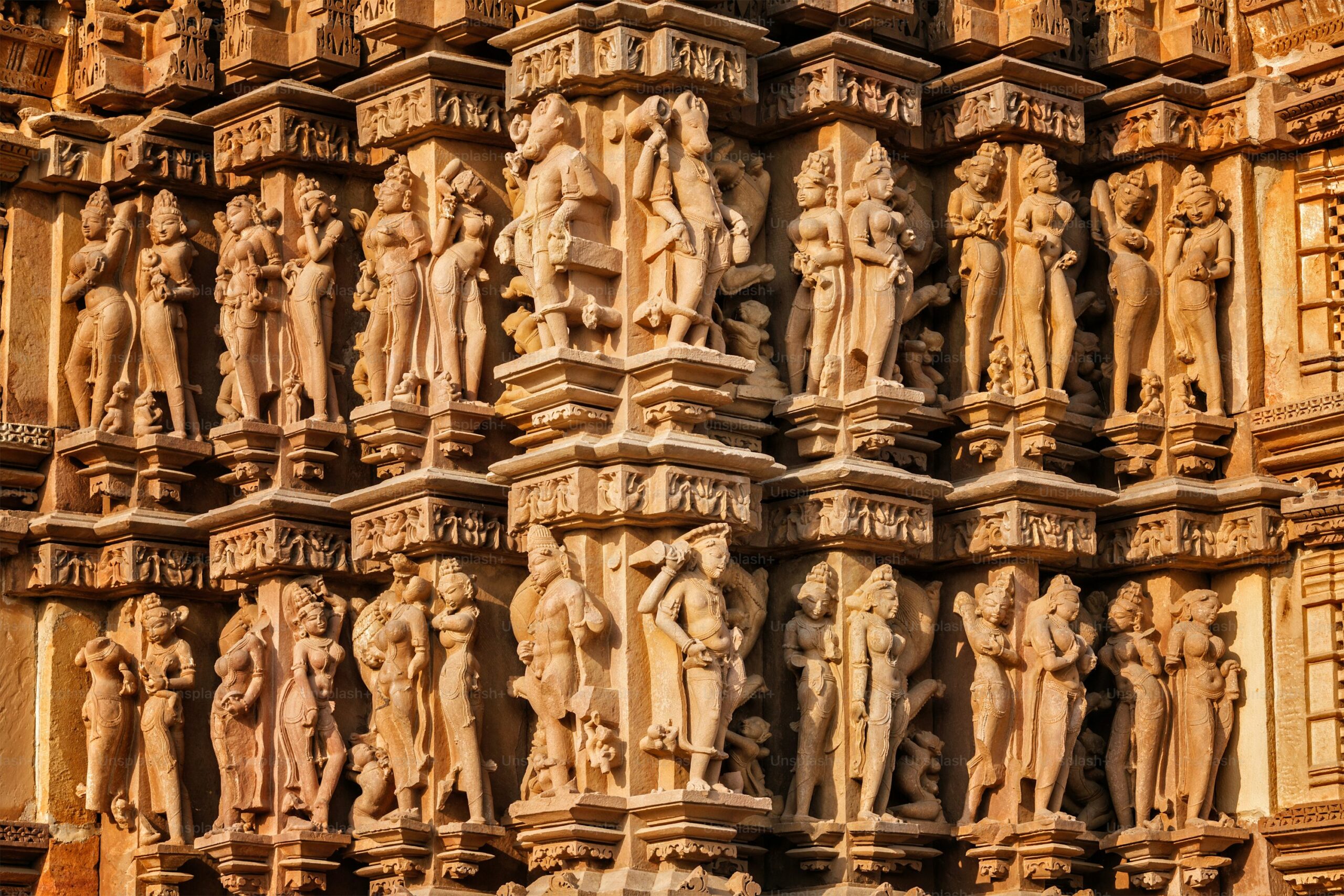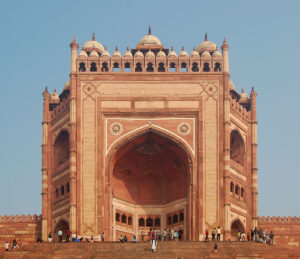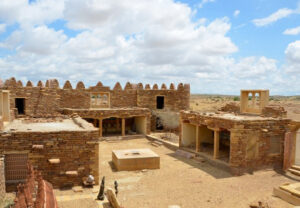
“India Through the Eyes of Khajuraho: A Journey of Temples and Time”
Khajuraho’s role in India is extremely important not only as a historical site but also as a cultural, religious, artistic, and tourist center. It is recognized as a symbol of India’s diversity, tolerance, and artistic tradition.
Khajuraho’s Key Roles in India:
Cultural Heritage:
The temples of Khajuraho bear testimony to India’s ancient cultural and artistic achievements.
They demonstrate how religion, art, and aesthetics were balanced in India.
It has been declared a World Heritage Site by UNESCO—which also gives it international recognition.
An Example of Religious Tolerance:
Khajuraho houses temples of both Hindu and Jain religions, symbolizing religious diversity and coexistence in medieval India.
This demonstrates how tolerant and inclusive society was at that time.
The Pinnacle of Indian Sculpture and Architecture:
The sculptures of Khajuraho represent the highest level of Indian craftsmanship.
The Nagara style of architecture and stone carvings here have been praised worldwide.
Khajuraho is taught as a role model in Indian art schools.
Contribution to Tourism and Economy:
Khajuraho is a major international tourist destination in India.
It attracts millions of tourists every year—both Indian and foreign.
This boosts local employment, the hotel industry, and the handicraft market.
Reflection of Indian Philosophy and Life Outlook:
The sculptures of Khajuraho are not limited to physical love—they depict the four human goals (Dharma, Artha, Kama, Moksha).
This shows that Indian culture considers Kama (desire) to be a sacred and moral part of life, not something taboo.
National and International Recognition:
Khajuraho has helped establish India as a cultural powerhouse on the world map.
It is a source of inspiration not only for history lovers but also for artists, researchers, and students.
The history of Khajuraho is a wonderful example of India’s rich cultural, religious, and architectural heritage. Located in the Chhatarpur district of Madhya Pradesh, it is a historic town world-renowned for its exquisite and intricately sculpted temples.

Buland Darwaza Asia’s largest door agra – See more
A Brief History of Khajuraho:
1. Construction Period:
The temples of Khajuraho were built between 950 and 1050 AD by the kings of the Chandela dynasty.
The rulers of the Chandela dynasty developed Khajuraho as a religious and cultural center.
These temples are primarily associated with Hinduism and Jainism.
2. Number of Temples:
Originally, there were approximately 85 temples in Khajuraho.
Today, only about 20 temples remain in preservation.
3. Architectural Style:
The temples of Khajuraho are built in the Nagara style, in which the shikhara (high dome) is prominent.
The erotic sculptures on the outer walls of the temples are particularly famous, but these represent only a portion of the temple’s sculpture—the rest are related to gods and goddesses, apsaras, music, warfare, and daily life.
4. Religious Tolerance:
The temples of Khajuraho encompass Hinduism (especially Shaivism, Vaishnavism, and Shaktism) as well as Jainism, reflecting the religious tolerance of the time.
Major Temples:
Kandariya Mahadev Temple – the largest and grandest temple, dedicated to Lord Shiva.
Lakshmana Temple – dedicated to Lord Vishnu, architecturally significant.
Vishnu Temple, Chausath Yogini Temple, Parasvanath Jain Temple – other major temples.
Decline and Rediscovery:
Khajuraho gradually fell into neglect after the Muslim invasions and the expansion of the Delhi Sultanate in the 13th century.
This forested city was discovered in 1838 by the British traveler T.S. “Rediscovered” by Burt.

Current Significance:
Recognized as a World Heritage Site by UNESCO in 1986.
It is now a major tourist destination and a symbol of India’s cultural heritage.
The Khajuraho Dance Festival is also held here every year, showcasing various classical dance forms of India.
1. The Importance of Kama Sutra in Khajuraho Sculpture:
Features:
Extremely detailed and lifelike sculptures are carved on the walls of Khajuraho temples.
These depict gods and goddesses, apsaras, scenes of daily life, music, war, and love.
Erotic sculptures are found only on the exteriors of temples, not inside.
Meaning and Purpose:
These sculptures consider desire as a natural and sacred part of life, like dharma, artha, and moksha.
Some scholars believe that these sculptures symbolize the Tantric tradition, the diversity of human life, and spiritual awakening.
This art is believed to be inspired by texts such as the Kama Sutra, but its purpose is to show the fullness of life, beyond physicality.
2. Architecture and Structure of the Temples:
Architectural Style – Nagara Style:
The temples of Khajuraho are built in the traditional Nagara style of North India.
Temples primarily consist of three parts:
Sanctum – where the idol of the main deity is placed.
Hall – for worship and other religious rituals.
Spire – the high, dome-shaped part above the sanctum.
Construction Technique:
The temples are constructed from sandstone, without the use of cement or mortar.
The stones are joined by a special interlocking system.
3. History of the Chandela Dynasty:
Chandela Rulers:
The Chandela dynasty ruled the Bundelkhand region from the 9th to the 13th centuries.
These Rajput rulers were initially subordinate to the Gurjar Pratiharas, then became independent.
Prominent Chandela Kings:
Yashovarman (c. 925–950 CE) – Built the Lakshmana Temple.
Dhangadeva (c. 950–1002 CE) – Built magnificent temples such as the Kandariya Mahadev.
The Chandela rulers developed Khajuraho as a religious, cultural, and architectural center.
Khajuraho Tourism Information:
How to Reach:
Railway Station: Khajuraho Railway Station (connections to Delhi, Jhansi, and Agra)
Airport: Khajuraho Airport (limited flights)
Road: Good roads from Chhatarpur, Satna, and Jhansi
Best Time to Visit:
October to March – Cool and pleasant weather
What to See:
Western Group of Temples – Kandariya Mahadev, Laxman Temple
Eastern Group – Jain Temples
Khajuraho Museum
Khajuraho Dance Festival (February-March) – Classical Dance
Conclusion: Khajuraho is a living testimony to India’s past—a remarkable confluence of art, religion, philosophy, and culture.
It symbolizes India’s tolerance, creativity, and spirituality and continues to be a powerful medium for showcasing the depth of Indian culture to the world.
Note: What do you think about Khajuraho? Please let us know in the comments section below. Your opinion is very important to us.
